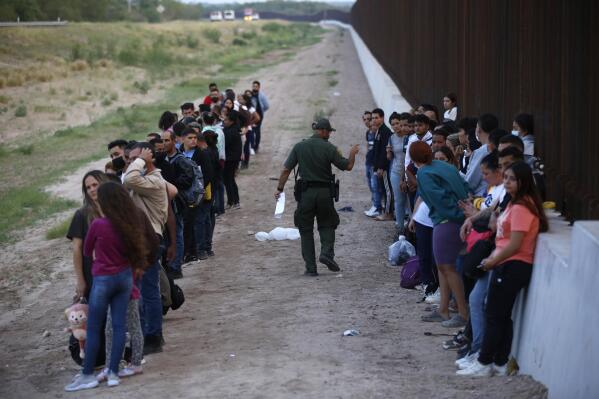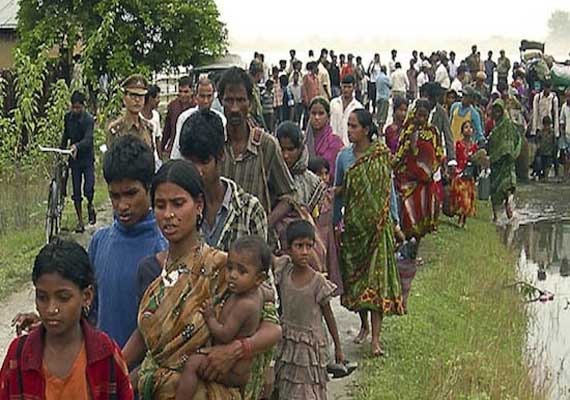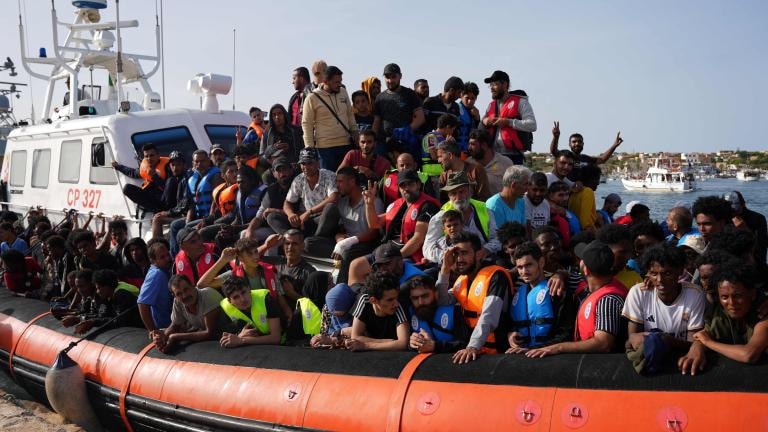Wikipedia’s definition states that Illegal immigration is the phenomenon of infiltration and settlement of foreign populations in a country without accordance with its immigration law. In 2021 the EU saw a staggering 64% increase in illegal immigration and the numbers have been increasing ever since. At the US border, the authorities encountered 2.8 million illegal immigrants in the year 2023. In 2022, it was at 2.7 million, which was a 16% increase from 2021. These trends show a uniform rise in global illegal immigration, which has become a political, financial and civil issue in the host countries. Let’s understand the intricacy of global immigration and if not dealt with delicately, how it stands to rip the fabrics of globalization.
History and Origin of Illegal Immigration
The concept of illegal immigration is fairly modern and of US origin. In the 18th and 19th century, there was no concept of illegal immigration. Immigration- that is a person settling in a country other than his native- is mostly a product of colonisation.
There were settlers, Europeans who settled in other countries disrupting and exploiting them, and the others were slaves, who were inhumanely traded and exploited for free labour. Immigration whether it’s of a community or an individual is frictionless and free in most instances.
The Independence of America opened an avenue for the third kind of immigration, where an individual in search of new work or education opportunities could enter the country and sometimes settle there. Though this kind of immigration was seen in history from time to time, it was not profound and rampant. Individuals from Northern Europe, China and South America were among the most to have settled in America. In 1882, implementing the Chinese Exclusion Act, the United States put the first-of-its-kind immigration law in modern times. In 1924 and 1965 it put forward immigration laws that are still prevalent today in the immigration issue of America. World War II, the War in the Middle East, and the fall of the soviet union shaped modern illegal immigration in Europe.
The establishment of the United Nations after the Second World War was supposed to be the first step towards a united global civilisation. The very idea of this new world order requires the ease of movement within any region on the earth, for whatever the purpose may be. Although the idea was a noble one the execution of it was not so promising. Technological progression and business ambitions were two avenues where this globalist approach was taken. Non-uniform development, colonial history, border conflict, proxy wars and religious and cultural differences failed its other avenues and together created a perfect path for mass migration.
Illegal Immigration in Modern Times
Illegal migration generally occurs in an upward direction, that is from countries with poor living conditions to the ones with better living conditions. Upon further introspection, it is found that several particular factors are responsible for illegal immigration from a country: Poverty, Asylum seeking, Deprivation of Citizenship, Family reunification and Better economic and education opportunities in the host country.
As the name suggests, the methods of this type of immigration are illegal and often fatal. Unlawful entry into a country is the most common method of illegal immigration. Would-be immigrants have been known to suffocate in shipping containers, boxcars and trucks, sink in shipwrecks caused by unseaworthy vessels, and die of dehydration or exposure during long walks without water in extreme heat.
Overstaying visa periods is another prominent method of Illegal migration. Individuals in this way arrive in the country lawfully however, they do not vacate or leave the country after their residency permission expires.
Sham marriages were another method of attaining unlawful citizenship. However, if caught many countries strip the individual of their citizenship and sometimes put them through harsh legal proceedings.
However, the most inhumane and vile method of illegal migration is human trafficking. In the case of mass migration, human trafficking occurs for cheap labour or a workforce for extreme living conditions. Often the victims were unaware that they were being trafficked. This also in a way sustains sex trafficking and organ trafficking rings as those are oftentimes operated by the same rackets or groups.
Upon analysis of numbers, it is evident that the United States, Europe and India are the ones who are facing the most mass migration.
Illegal Immigration in United States

From a geographical context, the USA receives its illegal migrants through two major routes in the Southern Border from Mexico; the Texas-Mexico border and the Arizona-Mexico border. This illegal population includes people majorly from the American continents, that is from Mexico, Columbia, Venezuela, the Dominican Republic etc. However, a percentage of the population also includes Middle Eastern and Asian countries like Syria, Afghanistan, Bangladesh, Pakistan, and China and a small fraction from India. Poor economy, high crime and civil unrest compelled population from Latin America to migrate into the US illegally. Venezuela is a country whose economy was crippled by US sanctions due to oil disputes, ironically is one of the largest contributors of illegal immigrants to the US. Population from the Middle East move to the US because of the civil unrest and poor economic conditions, which in most cases is done by the US and its proxies. Asian population mostly migrates in search of better economic opportunities.
Illegal Migration in Europe
In Europe, migrants cross the border illegally through five major border routes, which are Western African, Western Mediterranean, Eastern Mediterranean, Eastern Balkans and Eastern land border routes. The western African border route sees migration from African countries. Western and Eastern Mediterranean border route is used by Middle Eastern migrants from countries like Afghanistan, Syria, Yemen and Iraq. The Eastern Balkan and Eastern land border routes are used by Ukraine, Belarus and Turkey. Apart from that sea route is used by thousands of Pakistani Middle Easterners to land in the bays of the UK and Britain every year. In 2015, during and after the Syrian war approximately 1 million people entered into EU as refugees. This was one of the major catalysts for Britain’s exit from the European Union known as Brexit.
Illegal Migration in India

India also faces illegal migration issues from each side of its border. The statistics on illegal migrants in India are not available properly because of the size of the country, numerous border routes and the continuous nature of the migration. However, certain estimates suggest that the number could be somewhere between ten to twenty million, making it the country with the largest number of illegal immigrants in the world. From the Western side of the countries religiously persecuted communities like Hindus, Sikhs, Christians, Ahmadiyya Muslims and Jains enter into India seeking asylum. Economic opportunities compel Bangladeshis to enter India from the eastern border. Rohingyas from Myanmar also illegally enter India from the eastern side. As the entering population and the native population hold almost the same genetic and geographical signature their appearance becomes almost indifferentiable, which further makes it difficult to keep account and regulate them.
Apart from these, countries like Saudi Arabia, Brazil, Israel, and Russia also face a certain amount of illegal immigration.
Conclusion
Despite having such a detailed understanding of the matter, it is still a sticky situation to navigate for almost every country. Domestic politics and the native population’s reaction make the matter even more complicated. An influx of population will always ignite the question of the availability of resources in the minds of native individuals. There also occurs a leakage of certain anti-social fractions into a country that causes security risks such as violent crimes, theft and crimes against women. On top of that cultural differences and political fearmongering push people to have a distaste when it comes to migration.
In the West particularly in the USA and Europe immigration is frowned upon because of the belief that it causes a lessening of economic opportunities amongst natives. However, several studies show that immigrants generally pursue low-paying jobs that the natives do not pursue and frown upon even in times of economic hardship.
In another case, a major portion of illegal immigrants in India are religiously persecuted minorities like Hindus, Christians, Jains, and Sikhs from Pakistan, Bangladesh and Afghanistan. As India is the birthplace of Dharmic civilisation and is capable of preventing the atrocities upon them, it is the country’s moral and civilizational duty to give shelter to them.
On the flip side of this argument, there presents the statistical data of increased crime rate and economic burden that is caused by illegal immigration. Violent crimes, theft, grooming, rapes and Islamic radicalisation is on the increase in Europe and certain cases are directly related to mass illegal migration. Cites London, New York and California are bankrupt and are facing basic infrastructural failures and are on the verge of bankruptcy. In India, often instances of violent and sexual crimes are reported near Rohingya settlements, who are persecuted and expelled from their home country Myanmar. There also are reports of demographic change in certain states of India due to the influx of Bangladeshi Muslims, which directly affects electoral results and policy decisions for the natives.
This above shows the inter-tangled web of global illegal immigration. Some experts suggest peace promotion, conflict solving, uniform and cooperative growth and a strong UN as a solution to this global issue. However, at the core, it is a test of human nature. It is a question of whether we choose cooperation and thrive together or we choose to stay divided and fight in fractions.

